Our editors independently select these products. Making a purchase through our links may earn Well+Good a commission
One-Third of Black Women Will Experience Traction Alopecia—And the Cause Goes Beyond Tight Hairstyles
One-third of Black women experience traction alopecia, and while its often caused by certain hairstyles, it's also driven by genetics.

Lulu Cordero went natural in 2004. She was in college and had been getting a relaxer since she was nine, so she had no idea how to care for her natural texture. “I didn’t know what to do with my hair, so I would always wear it in a really tight, pulled-back bun or really tight braids. And ultimately, that led to me developing traction alopecia,” says Cordero. She’s among the one-third of Black women who experience traction alopecia, a form of hair loss caused by tension on the hair follicle. They’re the most at-risk population due to the prominence of high-traction styling as well as a genetic predisposition.
Experts in This Article
board-certified dermatologist
founder and CEO of hair-care brand Bomba Curls
board-certified hair loss doctor and hair replacement surgeon
Who is at risk for traction alopecia?
“‘Alopecia’ just means hair loss, and ‘traction’ means a pulling phenomenon,” says William Yates, MD, a board-certified hair-loss-restoration surgeon in Chicago. Hairstyle practices, like tight braiding or using chemicals that straighten the hair, cause traction on the hair follicle. “The hair follicle is underneath the skin, and when you pull tight on your hair strand, what you don’t see is that it’s like a root on a tree that’s screaming, ‘Whoa, this hurts, this hurts.’ Over time, from all that pulling the hair follicle becomes inflamed and stops producing hair.”
Traction alopecia is diagnosed through a scalp biopsy that reveals inflammation in the hair and follicles, explains Dr. Yates. And if not treated, traction alopecia can turn into scarring alopecia, a more permanent form of hair loss. While these conditions are related to tension, not everyone who wears tight hairstyles will get it—one person who hardly wears these styles may have an immediate reaction while another may spend their entire life in braids without ever experiencing hair loss (especially if they’re braider is careful not to pull too tight)—which is where genetics step in. “We know it’s just not from the traction,” says Dr. Yates. “There’s something else going on.”
For example, Central centrifugal cicatricial alopecia (CCCA), is a more permanent form of scarring alopecia that can happen with or without tension. You have a higher risk of developing CCCA if you have fibroids, benign uterine tumors that are also most prevalent in Black women. Nine out of every 10 Black women can expect to develop fibroids by age 50, compared to six in 10 when you look at the total population.
“There was a study that was done at Johns Hopkins where they were doing a chart review retrospective of all the patients who had CCCA, which is the most common type of scarring hair loss in African-American women,” says Dina Strachan, MD, a board-certified dermatologist in New York City. “And what they found, incidentally and unexpectedly, was that the women who had that type of hair loss were five times more likely to have fibroids.”
She notes that while fibroids are linked to CCCA, they’re not responsible for actually causing the condition. “It’s just the same trait that caused the hair loss is the same trait likely that caused the fibroids, which is an abnormal scarring response, like keloids,” says Dr. Strachan. “They think that In West Africa, that response may be protective against a certain type of parasites. It’s thought that fibroids are an abnormal scarring response to menstruation and that the CCCA is an abnormal scarring response to minor trauma to the hair.”
This potential genetic predisposition to tension-related hair loss paired with a tendency among Black women to wear hairstyles that can cause inflammation of the hair follicle means that Black women need to be extra careful when it comes to protecting against hair loss. Thankfully, in many cases, traction alopecia is preventable and reversible, especially if you know the signs and act fast,
How to prevent traction alopecia, scarring alopecia, and CCCA
The easiest way to prevent traction alopecia is to reduce the amount of tension on your scalp. This doesn’t necessarily mean you have to quit wearing styles that can cause tension—you just want to make sure that they’re not too tight or heavy.
“If you’re in pain, that’s not good,” says Dr. Strachan. You may also experience itching or burning when your “protective” styles are too tight, which are also signs to change things up.
That said, even if you don’t feel anything from your protective styles, they may still come with a risk of pulling at your scalp. “Most people with heavy dreadlocks don’t complain about being in pain, but if your dreadlocks are down to your hips, you need to tie them up and not have all that weight supported by the few hairs that are still attached to your head. It’s like boiling a frog one degree at a time. You don’t want to have that trauma, even if you don’t feel it as pain.”
Chemical relaxers can also cause the same type of inflammatory response in the hair follicles as the pulling from protective styles. “The chemical destruction of hair strand reacts down to the hair follicle and that causes inflammation,” says Dr. Yates. “It’ll look the same as somebody who had been wearing braids.” If you notice signs of damage like breakage, excessive shedding, and balding, you should stop getting relaxers right away.
If you get chemical relaxers to straighten your hair, know that this can also cause the same inflammatory response in the hair follicle that physical tension causes. Stop getting relaxers if you notice signs of damage like breakage, excessive, shedding, and balding.
Knowing the signs
Typically, traction alopecia first shows up in the form of thinning edges. “It’s usually spotty and the hair that grows back is baby-fine and sparse,” says Dr. Yates. “That’s still good because it’s letting us know that the hair follicle still is there. It just needs the right things to help it recover.”
But if time goes on and you don’t change your routine to treat this traction alopecia, traditional scarring alopecia can set in. “It’s not anything that sneaks up on you,” says Dr. Yates. “We’re not talking months, we’re talking years. It takes years to go from traction to scarring alopecia.”
However, keep in mind that CCCA can happen even without traction, especially if you have fibroids.”Not all people with CCCA first present with traction alopecia—but many have both,” says Dr. Strachan. “Traction alopecia stops when the trauma stops. CCCA progresses even when the trauma stops” Sometimes, you can experience traction alopecia and CCCA simultaneously. “A lot of the patients will have traditional traction alopecia on their frontal hairline and then if you part their hair down the middle, then you see a bald spot on the top of their head.”
You know it’s scarring alopecia or CCCA if the scalp looks shiny or even white. “When we say scarring hair loss, we mean the hair follicles are absent because they’ve been scarred over,” says Dr. Strachan. “So if it’s severe, it looks shiny and that’s bad. You don’t want to see shiny. You just want to treat it before it’s shiny.”
Treating traction alopecia, scarring alopecia, and CCCA
“Traction alopecia is actually something that is reversible,” says Dr. Yates. “If you catch it in time, stop doing [whatever is causing the damage], and start a healing process, you can reverse the damage.”
If the hair loss has begun, it’s time to cut down on tension. “As it’s getting worse and worse, instead of stopping what they’re doing, usually the person’s response is to do more weaving or braiding to cover up the bad area,” says Dr. Yates. “Instead, remove the source of the problem.”
But, if your hair loss is more genetic than tension-based, you may need to do more than change your style to calm the inflammation. “Sometimes there are things that you have to do like prescription things or steroids,” says Dr. Strachan. “You can inject steroids or put them on topically, but they don’t grow hair. They calm down inflammation.”
Next, you want to restimulate the hair follicle to promote growth using one of the following methods:
1. Red light therapy
“One way you can restimulate the follicle is with a low-level laser light and that’s red light,” says Dr. Yates. “You do that two times a week for 20 minutes a day. And that’s been proven with tremendous results for traction alopecia.” Dr. Yates suggests using redlight helmets, like the CurrentBody Skin LED Hair Regrowth Device ($895). But that’s out of your budget, you can try sitting under a red-light therapy lamp, like the Trophy Skin RejuvaliteMD ($200); or treating your scalp with a red-light comb, like the Solaris Laboratories NY Intensive LED Hair Growth Brush ($70).
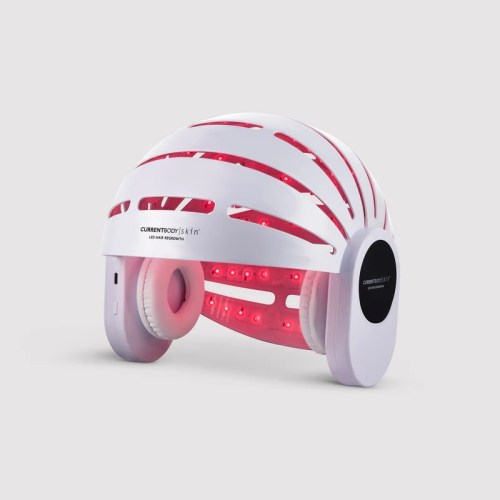
CurrentBody Skin, LED Hair Regrowth Device — $895.00
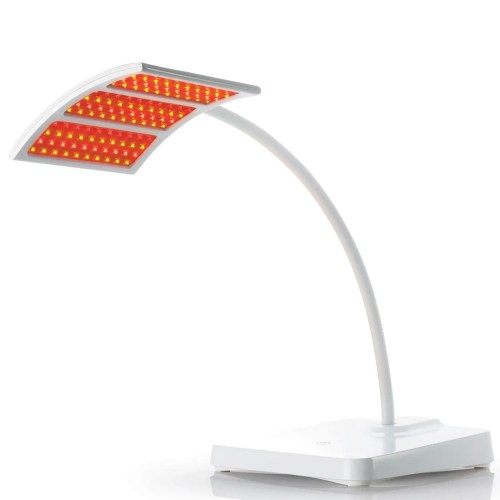
Trophy Skin RejuvaliteMD — $200.00
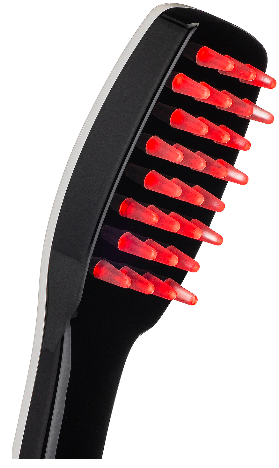
Solaris Laboratories NY Intensive LED Hair Growth Brush — $70.00
2. Rogaine or in-office treatment
“We also recommend things like Rogaine that also can stimulate the hair follicle to regrow hair,” says Dr. Yates. Additionally, getting in-office procedures like plasma-rich platelet therapy (it’s the vampire facial on your head) can help.
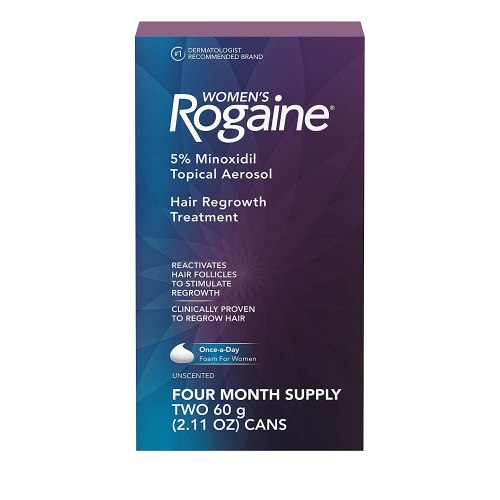
Women's Rogaine 5% Minoxidil Foam — $43.00
3. Circulation-boosting topicals
Lastly, you can try topical solutions that stimulate scalp circulation to increase the flow of nutrient and oxygen-rich blood to your hair follicles. Cordero, whose experience with traction alopecia led her to develop the hair-care line Bomba Curls, created the Forbidden Hair Oil ($22) to stimulate circulation. “It’s powered by a premium coffee extract, and also has, of course, that viral ingredient, rosemary extract. It also has black cumin seed oil which is a miracle ingredient. It has a compound in it called quinone, an ingredient that’s in steroids that are prescribed to alopecia patients, but cumin seed oil is a naturally rich source of the ingredient.”
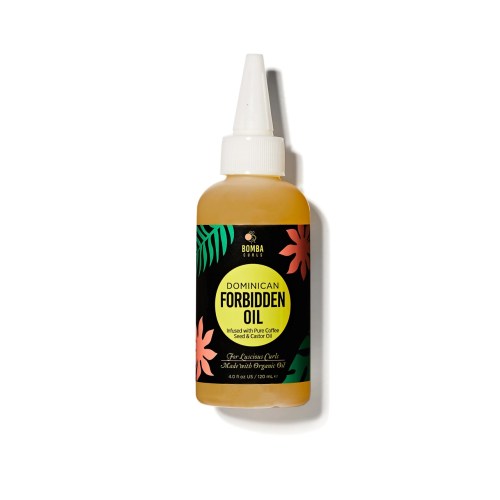
Bomba Curls, Forbidden Hair Oil — $22.00
Keep in mind that if you’re experiencing scarring alopecia or CCCA, you can explore treatment options, but don’t expect your hair to go totally back to normal—especially if the scarring is widespread. “You can get quite a bit of hair regrowth, but it’s not going to come back completely,” says Dr. Strachan. In this case, you’ll want to work with a dermatologist to determine the best course of action.
Remember to stay positive and proactive
Caring for Black hair, which tends to be coarse and tightly coiled, can be difficult. To think that the very styles we lean on to protect our hair and make styling easier can cause damage is wildly disappointing. And to know that there could be something in our genetics that makes hair loss more common is a gut punch. Be mindful of your hair and do what you can to keep it healthy and intact. Seek out stylists who know how o work with natural hair, prioritize hair and scalp health, and don’t pull your hair super tight. And follow some of the tips above. Most importantly, the second you start to notice hair loss, seek out a board-certified dermatologist to help you navigate your options.
Sign up for the Well+Good SHOP Newsletter
Get exclusive deals on wellness, beauty, fitness, and food products that have been hand-picked by our editors.
Got it, you've been added to our email list.










